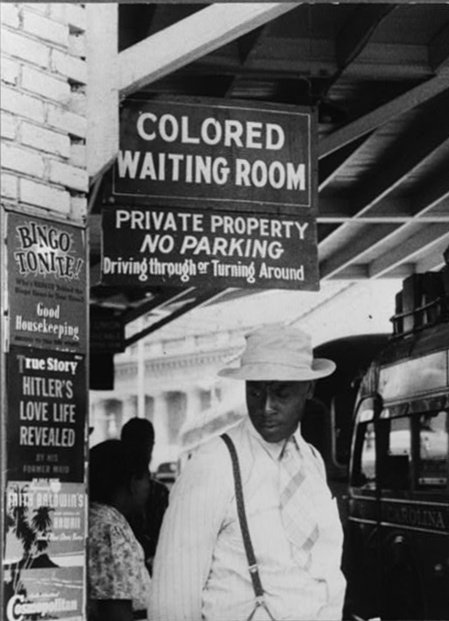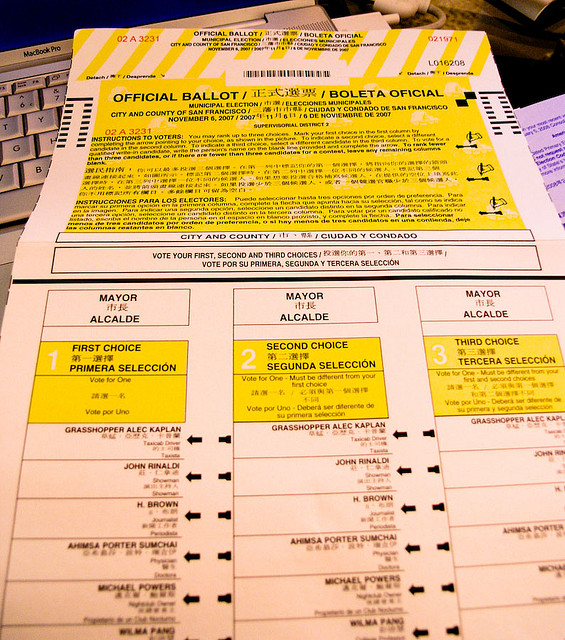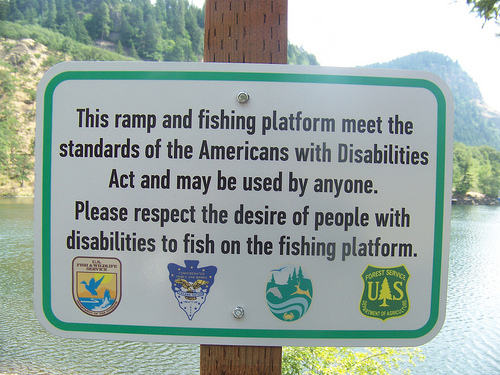Civil Rights
Dr. Christopher N. Lawrence
Middle Georgia State University
POLS 1101: American Government
🔊 Disable Narration
Equality Before The Law
In principle, civil rights are about equality—the right of individuals to be treated fairly and equitably by government officials.
This right is derived from the 14th Amendment's guarantee that all people are entitled to “the equal protection of the laws.”
Treating People Differently
When government officials treat one person differently from another, it must be justified.
Most government actions that discriminate are subject to the rational basis test.
For example, admission to college.
Is the action a reasonable way to promote a legitimate governmental interest?
Suspect Classifications
-
Exceptions:
Distinctions based on gender are subject to heightened scrutiny (or intermediate scrutiny): is the action substantially related to accomplishing an important governmental goal?
Distinctions based on race, ethnicity, national origin, and religious beliefs are subject to strict scrutiny: does the action accomplish a compelling governmental interest in the least discriminatory way possible?
Open Questions
Are disproportionate impact and unintentional discrimination forms of discrimination that require remediation?
Are laws and actions designed to help minorities like affirmative action programs subject to the same level of scrutiny as those that are designed to hurt minorities?
Civil Rights for African Americans
-
Immediately after the Civil War, national politicians aggressively promoted the rights of newly freed slaves:
-
Civil War Amendments (13th, 14th, 15th).
-
Freedmen's Bureau.
-
Civil rights laws.
-
The End of Reconstruction
-
Support soon faded as Reconstruction became unpopular in the north and former Confederates regained power in the south.
-
1876 Hayes/Tilden bargain ended Reconstruction.
-
Supreme Court curtailed civil rights laws passed to enforce 14th and 15th Amendments.
The Redeemer Period: Jim Crow
-
Southern states adopted Jim Crow laws to strip blacks of voting and other rights:
-
Literacy and understanding tests
-
Lengthy residency requirements
-
Poll taxes
-
Grandfather clauses
-
State Action & “Separate But Equal”
-
The Supreme Court's rulings in the late 1800s helped this process:
-

The state action doctrine meant that “private” organizations could discriminate based on race or otherwise deny citizens' rights—enabled the white primary and gave free rein to KKK.
-
The “separate but equal” doctrine allowed state-sponsored segregation (Plessy v. Ferguson, 1896).
-
Civil Rights in the Early 20th Century
Blacks began to migrate away from the “cotton belt” to the industrializing north; became an important voting bloc in northern cities.
-
The NAACP Legal Defense Fund began to challenge anti-black laws in the courts.
Smith v. Allwright (1944) outlawed the white primary.
Shelley v. Kraemer (1948) ended legal enforcement of residential segregation.
Civil Rights and Education
-
The NAACP also challenged the “separate but equal” educational system.
Courts gradually whittled away the legal basis for segregation in higher education.
Brown v. Board of Education (1954) overturned Plessy.
However, in the face of “massive resistance” federal courts were not aggressive in enforcing desegregation until the late 1960s.
Civil Rights and Voting Rights Acts
A decade of legal and political conflict culminated in the passage of two landmark laws by Congress:
Civil Rights Act of 1964: banned employment discrimination; required most businesses serving the public to be integrated; cut off federal funding to states that discriminated in administering federal programs.
Voting Rights Act of 1965: required pre-clearance of changes in election practices, mostly in the South; empowered federal officials to register voters; abolished literacy tests and poll taxes.
Modern Conflict Over Civil Rights
-
Since 1960s, conflict over civil rights has become more national in scope, leading to less political support for further efforts to promote civil rights.
-

Controversy around busing (1970s–80s).
Debate over the merits of affirmative action programs and other efforts to support minorities.
Public opposition has led to new policies designed to limit affirmative action.
Increased emphasis on the difference between de facto and de jure segregation.
-
Recent Developments
In Fisher v. University of Texas (2013), Supreme Court somewhat limited consideration of race in college admissions. A decade later, Students for Fair Admissions v. Harvard (2023) said race and ethnicity could not be used at all as criteria in college admissions decisions.
Preclearance provisions of the Voting Rights Act of 1965 were suspended by the Supreme Court in 2013 in Shelby County v. Holder, until or unless Congress revises coverage formula.
Civil Rights for Hispanics

Fastest-growing minority group.
Diverse national origins.
-
Efforts to secure rights for Hispanics have tended to focus more on economic and social equality:
Cesar Chávez, LULAC, MALDEF.
-
1972 amendments to Voting Rights Act expanded pre-clearance to southwestern states; included requirements for translated ballots.
-
Concerns about immigration and immigrants' rights widely seen as a “Hispanic issue.”
Asian American Civil Rights
Not a monolithic group in their origins or politics.
-

Historically subject to government discrimination:
Chinese Exclusion Act; Immigration Act of 1924.
Internment of Japanese-Americans during World War II.
-
Increased political visibility in recent decades:
Japanese-Americans long prominent in Hawaiian politics.
More recently: Gov. Bobby Jindal (La.), Gov. Nikki Haley (S.C.), V.P. Kamala Harris (Cal.).
Civil Rights of Native Americans
Complex relationship dating back to the colonial era; historically seen as separate nations.
U.S. government regularly broke treaties with tribes; pushed “removal” to western territories.
Members of various tribes gained U.S. citizenship over time; in 1924, all Native Americans became U.S. citizens by law.
Economic empowerment since 1980s has rested on growth of tribal gaming.
Womens' Rights
-

19th Amendment (1920) guaranteed women the right to vote.
Participation in the labor force during World War II changed expectations about gender roles.
Amendment to Civil Rights Act of 1964 included gender discrimination.
While the Equal Rights Amendment was not ratified, much of its intended effect has been “constitutionalized” by the courts.
Controversies remain, including equal pay.
Rights of Gays and Lesbians
Public support for equal rights for gays and lesbians has increased over time.
Increasing number of openly gay and lesbian political figures.
Gays and lesbians have been able to serve openly in the Armed Forces since the repeal of the “don't ask, don't tell” policy in September 2011.
Same-Sex Marriage
1996 Defense of Marriage Act forbade federal recognition of same-sex marriages.
Until 2015 some states recognized same-sex marriages; some others recognized civil unions that were mostly equivalent.
Other states, including Georgia, adopted state constitutional amendments against same-sex marriage.
Same-Sex Marriage
-
Part of the Defense of Marriage Act was struck down as unconstitutional in United States v. Windsor (2013).
Supreme Court ruled against 2008 California referendum ending recognition of new same-sex marriages in Hollingsworth v. Perry (2013).
Same-sex marriage becomes legal in over 20 more states over the following two years.
Supreme Court ruled that same-sex marriage is a constitutional right in Obergefell v. Hodges (2015), striking down state laws and constitutional provisions to the contrary.
Rights of the Disabled
-

Since the 1960s, federal laws and court decisions have expanded the rights of those with physical and mental disabilities.
Americans With Disabilities Act of 1990 (ADA) gave broad rights to disabled Americans for “reasonable accommodations” in employment and education, at business or taxpayer expense.
-
Rights for the disabled tend to be popular—but much more expensive than rights for other groups.
Copyright and License
The text and narration of these slides are an original, creative work, Copyright © 2000–25 Christopher N. Lawrence. You may freely use, modify, and redistribute this slideshow under the terms of the Creative Commons Attribution-Share Alike 4.0 International license. To view a copy of this license, visit http://creativecommons.org/licenses/by-sa/4.0/ or send a letter to Creative Commons, 444 Castro Street, Suite 900, Mountain View, California, 94041, USA.
Other elements of these slides are either in the public domain (either originally or due to lapse in copyright), are U.S. government works not subject to copyright, or were licensed under the Creative Commons Attribution-Share Alike license (or a less restrictive license, the Creative Commons Attribution license) by their original creator.
Works Consulted
The following sources were consulted or used in the production of one or more of these slideshows, in addition to various primary source materials generally cited in-place or otherwise obvious from context throughout; previous editions of these works may have also been used. Any errors or omissions remain the sole responsibility of the author.
- Barbour, Christine and Gerald C. Wright. 2012. Keeping the Republic: Power and Citizenship in American Politics, Brief 4th edition. Washington: CQ Press.
- Coleman, John J., Kenneth M. Goldstein, and William G. Howell. 2012. Cause and Consequence in American Politics. New York: Longman Pearson.
- Fiorina, Morris P., Paul E. Peterson, Bertram D. Johnson, and William G. Mayer. 2011. America's New Democracy, 6th edition. New York: Longman Pearson.
- Ginsberg, Benjamin, et al. 2015. We The People, 10th Essentials edition. New York: W.W. Norton.
- Krutz, Glen, et al. 2025. American Government, 4th edition. Houston: OpenStax College.
- O'Connor, Karen, Larry J. Sabato, and Alixandra B. Yanus. 2013. American Government: Roots and Reform, 12th edition. New York: Pearson.
- Sidlow, Edward I. and Beth Henschen. 2013. GOVT, 4th edition. New York: Cengage Learning.
- The American National Election Studies.
- Various Wikimedia projects, including the Wikimedia Commons, Wikipedia, and Wikisource.